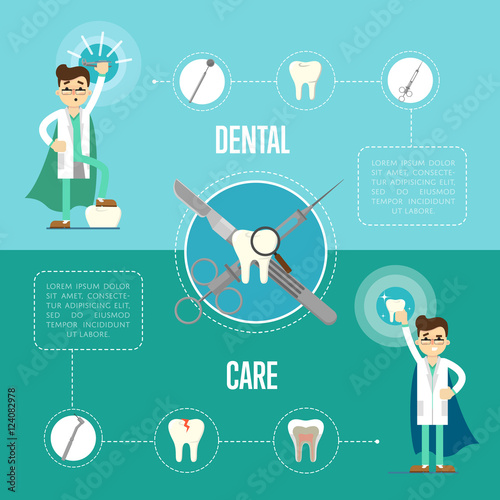Discover The Introducing Advancements That Are Changing The Landscape Of Dental Surgery. Examine The Future Of The Field And Ensure You Stay At The Forefront. Click Now For A Preview Of What Is To Come
Discover The Introducing Advancements That Are Changing The Landscape Of Dental Surgery. Examine The Future Of The Field And Ensure You Stay At The Forefront. Click Now For A Preview Of What Is To Come
Blog Article
Web Content Author-Kokholm Terrell
Welcome to the world of dental surgery, where advancements and developments are shaping the future of the field! In this amazing world, you'll witness the transformative power of robotics, the sophisticated wonder of 3D printing, and the game-changing influence of minimally intrusive strategies.
The future of oral surgery holds a promise of precision, effectiveness, and enhanced patient end results. With the help of advanced robotics, cosmetic surgeons have the ability to execute complex procedures with higher precision and control.
3D printing innovation is transforming the creation of dental implants and prosthetics, providing tailored remedies that fit effortlessly into each individual's one-of-a-kind anatomy.
Additionally, minimally invasive strategies are decreasing post-operative discomfort and recuperation time, allowing people to go back to their day-to-days live faster.
Get ready to explore the interesting developments and advancements that are reshaping the landscape of dental surgery!
Improvements in Robotics
One major improvement in oral surgery is using robot technology, which allows for precise and effective surgical procedures. With the help of robot systems, dental specialists have the capability to execute intricate surgical procedures with boosted accuracy, decreasing the risk of human mistake.
These robotic systems are geared up with advanced imaging modern technology and precise tools that enable surgeons to navigate via complex physiological structures with ease. By making use of robotic modern technology, surgeons can accomplish higher medical precision, leading to boosted patient results and faster healing times.
In https://www.khou.com/article/news/health/free-smiles-clinic-gives-dental-work-to-those-who-cant-normally-afford-it/285-2edc6ab7-5727-42ad-b5a4-6090581221fa , making use of robotics in oral surgery allows for minimally intrusive procedures, lowering the injury to surrounding tissues and promoting faster healing.
3D Printing in Dental Surgery
To boost the field of oral surgery, you can explore the subtopic of 3D printing in oral surgery. https://jaredokezt.smblogsites.com/33018944/exactly-how-can-your-food-choices-impact-dental-implant-recuperation-discover-the-most-effective-and-worst-options-to-make-sure-a-smooth-recovery-procedure -edge innovation has the possible to revolutionize the way dental surgeons operate and treat people. Right here are four crucial ways in which 3D printing is shaping the field:
- ** Customized Surgical Guides **: 3D printing enables the creation of extremely exact and patient-specific medical overviews, enhancing the precision and efficiency of procedures.
- ** Implant Prosthetics **: With 3D printing, oral doctors can develop personalized implant prosthetics that flawlessly fit a patient's unique makeup, resulting in much better outcomes and individual satisfaction.
- ** Bone Grafting **: 3D printing makes it possible for the production of patient-specific bone grafts, reducing the requirement for traditional implanting strategies and enhancing healing and recovery time.
- ** Education and learning and Training **: 3D printing can be utilized to produce realistic medical designs for academic objectives, allowing dental surgeons to practice complex procedures before performing them on clients.
With its prospective to boost accuracy, modification, and training, 3D printing is an amazing advancement in the field of oral surgery.
Minimally Intrusive Techniques
To even more progress the field of oral surgery, embrace the potential of minimally intrusive strategies that can greatly profit both cosmetic surgeons and people alike.
Minimally intrusive techniques are changing the field by minimizing medical injury, reducing post-operative pain, and increasing the recovery process. These methods include making use of smaller incisions and specialized tools to do treatments with precision and performance.
By using advanced imaging innovation, such as cone light beam computed tomography (CBCT), specialists can accurately intend and perform surgical procedures with minimal invasiveness.
Furthermore, making use of lasers in dental surgery allows for precise cells cutting and coagulation, leading to lessened blood loss and lowered recovery time.
With minimally invasive techniques, people can experience quicker healing, lowered scarring, and enhanced outcomes, making it a necessary element of the future of dental surgery.
https://how-to-treat-periodontal62840.blogoscience.com/39238461/discover-essential-insights-about-dental-implants-for-senior-citizens-and-uncover-crucial-considerations-that-might-affect-your-smile-reconstruction-journey-what-will-you-uncover , as you can see, the future of dental surgery is unbelievably promising, with interesting advancements and advancements forming the field.
From the advancements in robotics to using 3D printing and minimally intrusive methods, oral cosmetic surgeons are revolutionizing the method they offer care.
While some may bother with the prospective cost associated with these advancements, it is very important to remember that these technologies ultimately improve person end results and minimize recuperation time, making them well worth the financial investment over time.
